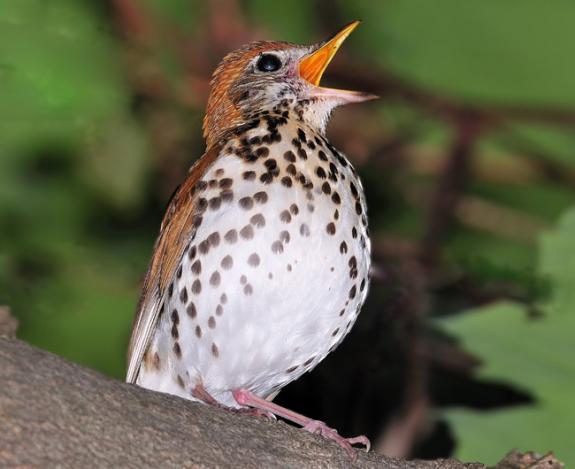In homeroom, we've continued looking into the complicated consequences of human beings affecting the fates of other species. This week, we looked at habitat fragmentation.
 |
| Here's a snake in its preferred environment. It has a decent size range that allows it food and shelter. Then, humans move in. |
Each group of students was given a print out of this, along with a bunch of one-inch circles, which represent the nesting territories required for the wood thrush (the adorable bird pictured above) to successfully breed.
In this scenario, the owner of the land quite reasonably decides to develop some of it. Over the course of ten years, a couple of roads are built, as well as some houses. The shaded box at the bottom represents an area that has been logged.
In person, it still looks serene and beautiful, and now it's easier to get to, thanks to the roads. The houses are nestled back in the woods, and to the untrained eye, it looks much as it did before.
Unfortunately, things look much different to the wood thrush. As far as it's concerned, the habitat has been drastically changed. Many birds are quite sensitive to manmade activity, and can't nest in areas that have structures or activity. Some animals simply won't tolerate it and move on. But others are subject to other factors, such as increased predation. (Imagine, a nesting wood thrush is startled by a lawn mower and flies from the nest. Meanwhile, another animal finds the eggs unguarded and has a filling meal.)
Twenty years later, things are even busier, with the addition of more roads and houses, as well as a snow mobile/ATV trail.
Keeping in mind that the Wood Thrush cannot successfully nest near these manmade creations, how many can fit in each area now? Students worked together to try to fit in as many nesting areas as possible in all of these scenarios.
Finally, we talked about the reality of the situation. Not all land can be completely protected and left in an untouched state. Land (and other resources) have to be managed, ideally in ways that are sustainable to wildlife and humans.
Students were tasked with creating plans that included all of the features of the previous scenarios (including the trail, the same number of homes, and a logged area), but managed those changes in a less impactful way.










No comments:
Post a Comment